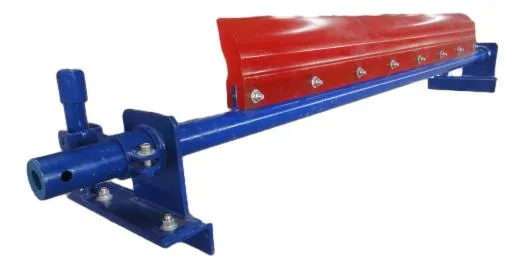 Afrikaans
Afrikaans  Albanian
Albanian  Amharic
Amharic  Arabic
Arabic  Armenian
Armenian  Azerbaijani
Azerbaijani  Basque
Basque  Belarusian
Belarusian  Bengali
Bengali  Bosnian
Bosnian  Bulgarian
Bulgarian  Catalan
Catalan  Cebuano
Cebuano  Corsican
Corsican  Croatian
Croatian  Czech
Czech  Danish
Danish  Dutch
Dutch  English
English  Esperanto
Esperanto  Estonian
Estonian  Finnish
Finnish  French
French  Frisian
Frisian  Galician
Galician  Georgian
Georgian  German
German  Greek
Greek  Gujarati
Gujarati  Haitian Creole
Haitian Creole  hausa
hausa  hawaiian
hawaiian  Hebrew
Hebrew  Hindi
Hindi  Miao
Miao  Hungarian
Hungarian  Icelandic
Icelandic  igbo
igbo  Indonesian
Indonesian  irish
irish  Italian
Italian  Japanese
Japanese  Javanese
Javanese  Kannada
Kannada  kazakh
kazakh  Khmer
Khmer  Rwandese
Rwandese  Korean
Korean  Kurdish
Kurdish  Kyrgyz
Kyrgyz  Lao
Lao  Latin
Latin  Latvian
Latvian  Lithuanian
Lithuanian  Luxembourgish
Luxembourgish  Macedonian
Macedonian  Malgashi
Malgashi  Malay
Malay  Malayalam
Malayalam  Maltese
Maltese  Maori
Maori  Marathi
Marathi  Mongolian
Mongolian  Myanmar
Myanmar  Nepali
Nepali  Norwegian
Norwegian  Norwegian
Norwegian  Occitan
Occitan  Pashto
Pashto  Persian
Persian  Polish
Polish  Portuguese
Portuguese  Punjabi
Punjabi  Romanian
Romanian  Russian
Russian  Samoan
Samoan  Scottish Gaelic
Scottish Gaelic  Serbian
Serbian  Sesotho
Sesotho  Shona
Shona  Sindhi
Sindhi  Sinhala
Sinhala  Slovak
Slovak  Slovenian
Slovenian  Somali
Somali  Spanish
Spanish  Sundanese
Sundanese  Swahili
Swahili  Swedish
Swedish  Tagalog
Tagalog  Tajik
Tajik  Tamil
Tamil  Tatar
Tatar  Telugu
Telugu  Thai
Thai  Turkish
Turkish  Turkmen
Turkmen  Ukrainian
Ukrainian  Urdu
Urdu  Uighur
Uighur  Uzbek
Uzbek  Vietnamese
Vietnamese  Welsh
Welsh  Bantu
Bantu  Yiddish
Yiddish  Yoruba
Yoruba  Zulu
Zulu Understanding V-Belt Drive Systems and Their Pulley Mechanisms for Efficient Power Transmission
Understanding V-Belt Drive Pulleys
V-belt drive pulleys are a fundamental component in various mechanical systems, widely used in industries ranging from manufacturing to automotive. These pulleys play a critical role in transmitting power between rotating shafts, utilizing the friction between the V-belt and pulley to ensure efficient power transfer.
Understanding V-Belt Drive Pulleys
One of the notable advantages of using V-belt drive pulleys is their versatility. They can be found in a wide range of applications, from small machinery to large industrial equipment. In automotive systems, for instance, V-belt drives are used to connect components like alternators, water pumps, and air conditioning compressors to the engine. Similarly, in industrial settings, they are crucial for operating conveyors, fans, and pumps.
v belt drive pulley

When selecting a V-belt drive pulley, several factors must be considered to maximize performance. These include the pulley diameter, material, and the number of grooves. The diameter can influence the speed and torque applied to the connected component, while the material—often fabricated from aluminum, steel, or thermoplastics—determines durability and weight. Additionally, the number of grooves on the pulley affects the overall power transmission capability.
Maintenance is another important aspect of V-belt systems. Regular inspection of the V-belt and pulleys can prevent premature wear and potential failures. Signs of wear may include cracking or fraying of the belt, misalignment, or unusual noises during operation. Ensuring proper tension in the V-belt is also crucial, as too much or too little tension can lead to inefficient operation and decreased lifespan of the components.
In conclusion, V-belt drive pulleys are a vital part of many mechanical systems, offering efficient, reliable power transmission. Their robust design and adaptability make them ideal for a variety of applications, ensuring they remain an integral component in modern machinery. Proper selection, installation, and maintenance can significantly enhance their performance and longevity, underscoring their importance in engineering and industrial operations. As technology evolves, the role of V-belt drive pulleys continues to adapt, maintaining their relevance in an ever-changing landscape of power transmission solutions.
-
Revolutionizing Conveyor Reliability with Advanced Rubber Lagging PulleysNewsJul.22,2025
-
Powering Precision and Durability with Expert Manufacturers of Conveyor ComponentsNewsJul.22,2025
-
Optimizing Conveyor Systems with Advanced Conveyor AccessoriesNewsJul.22,2025
-
Maximize Conveyor Efficiency with Quality Conveyor Idler PulleysNewsJul.22,2025
-
Future-Proof Your Conveyor System with High-Performance Polyurethane RollerNewsJul.22,2025
-
Driving Efficiency Forward with Quality Idlers and RollersNewsJul.22,2025





























